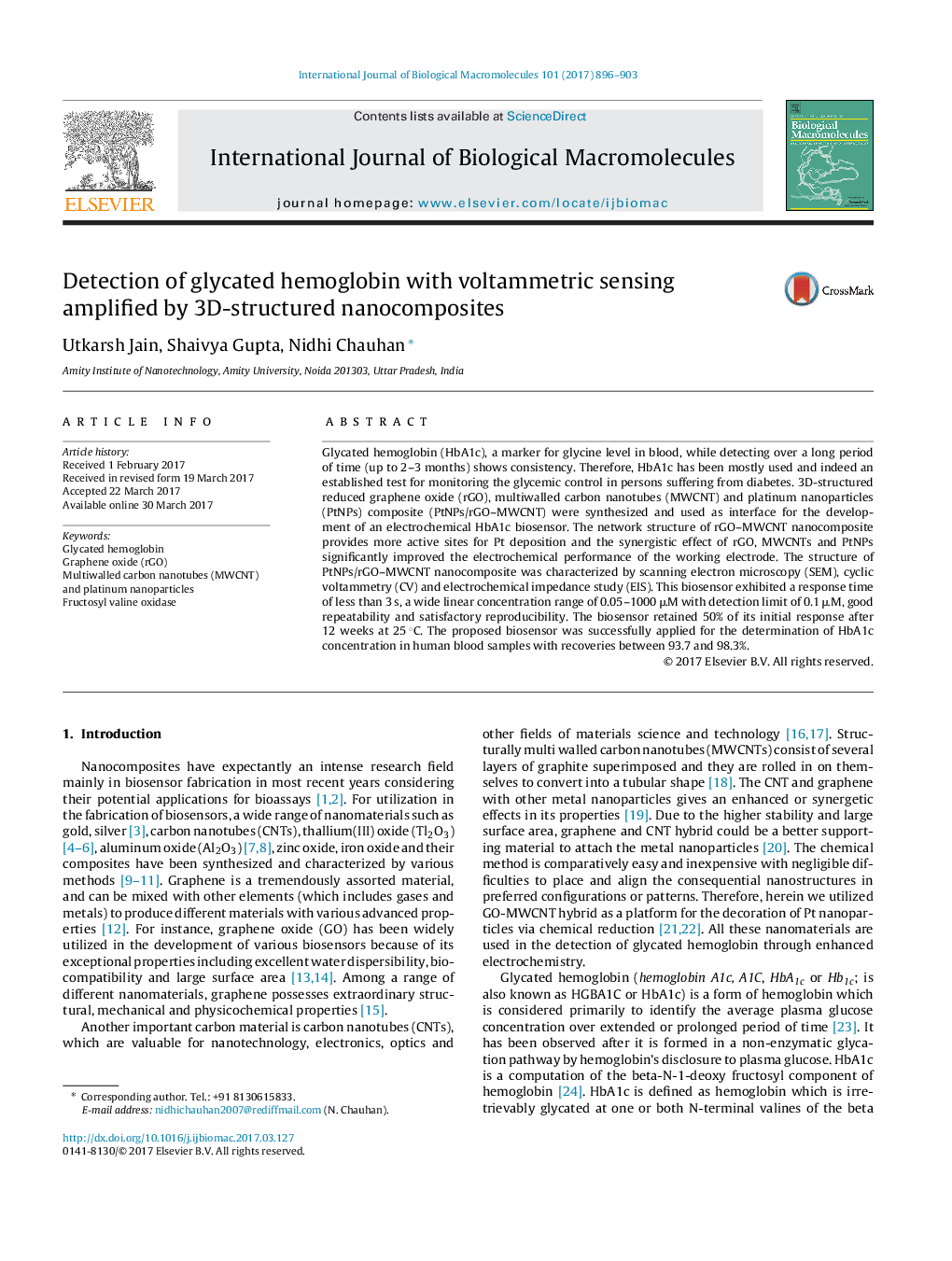| Article ID | Journal | Published Year | Pages | File Type |
|---|---|---|---|---|
| 5512022 | International Journal of Biological Macromolecules | 2017 | 8 Pages |
Abstract
Glycated hemoglobin (HbA1c), a marker for glycine level in blood, while detecting over a long period of time (up to 2-3 months) shows consistency. Therefore, HbA1c has been mostly used and indeed an established test for monitoring the glycemic control in persons suffering from diabetes. 3D-structured reduced graphene oxide (rGO), multiwalled carbon nanotubes (MWCNT) and platinum nanoparticles (PtNPs) composite (PtNPs/rGO-MWCNT) were synthesized and used as interface for the development of an electrochemical HbA1c biosensor. The network structure of rGO-MWCNT nanocomposite provides more active sites for Pt deposition and the synergistic effect of rGO, MWCNTs and PtNPs significantly improved the electrochemical performance of the working electrode. The structure of PtNPs/rGO-MWCNT nanocomposite was characterized by scanning electron microscopy (SEM), cyclic voltammetry (CV) and electrochemical impedance study (EIS). This biosensor exhibited a response time of less than 3 s, a wide linear concentration range of 0.05-1000 μM with detection limit of 0.1 μM, good repeatability and satisfactory reproducibility. The biosensor retained 50% of its initial response after 12 weeks at 25 °C. The proposed biosensor was successfully applied for the determination of HbA1c concentration in human blood samples with recoveries between 93.7 and 98.3%.
Keywords
Related Topics
Life Sciences
Biochemistry, Genetics and Molecular Biology
Biochemistry
Authors
Utkarsh Jain, Shaivya Gupta, Nidhi Chauhan,
